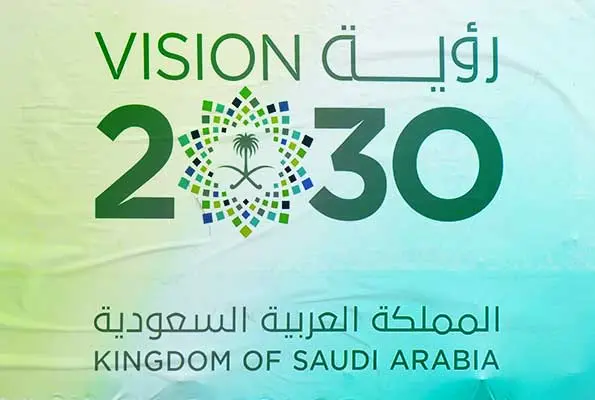Saudi Arabia has postponed several of the projects launched as part of its economic reform plan beyond 2030, the first admission that the country is having to modify the schedule to reach the programme’s aims.
The government has decided to extend the deadline to increase capacity and avoid enormous inflationary pressures and supply bottlenecks, according to Finance Minister Mohammed Al Jadaan.
A longer period is required to “create factories, even necessary human resources,” according to Al Jadaan in Riyadh. “The postponement or prolongation of some projects will benefit the economy.”
According to Al Jadaan, the administration went back to reassess the schedule of several projects after assessing how much borrowing was allowed.
He stated that all plans had been reassessed based on “economic, social, employment, and quality-of-life returns, among other variables, during the last 18 months.”As a result, some are “being hastened, while others—primary projects in the pipeline that have yet to be revealed—are given a longer execution schedule,” he explained.
“There are strategies that have been postponed and strategies that will be funded after 2030,” Al Jadaan explained. Project timetables are subject to review by a committee under the leadership of Crown Prince Mohammed Bin Salman.
Prince Mohammed’s ambitious Vision 2030 programme, introduced with fanfare in 2016, aims to diversify the oil-dependant economy and attract foreign investment. The government has long touted progress in areas ranging from tourism and industry to digitisation and women’s labour market integration.
However, the costs are mounting for an economy that still relies on energy to generate the majority of government revenue. Following the Kingdom’s first budget surplus in nearly a decade last year, it updated its medium-term economic forecasts, anticipating deficits for years to come as it accelerates spending.
More Protected
According to Ayham Kamel, head of Middle East and North Africa research at the Eurasia Group, announcing revisions to the timeframe for some Vision 2030 projects and programmes seven years into the plan is a well-calibrated move by MBS, as the Saudi crown prince is known.
“The crown prince required improvements on the ground so that people could feel the impact of Vision 2030 before informing them the figures have to change,” Kamel explained. “Because he’s a far more secure leader with no major threats to his authority, he’s more open to suggestions from other areas of the system.”
According to the International Monetary Fund, Saudi Arabia would require crude at $86 per barrel to balance its budget, a price higher than its average this year.
Meanwhile, Bloomberg Economics stated that if government-related organisations such as the Saudi sovereign wealth fund are included, the break-even point will likely jump to $110 in the second half of this year.
Steffen Hertog, an associate professor at the London School of Economics and Political Science, “They should be doing this now and adjusting systematically. It’s fiscally favourable, especially given the comparatively lower present oil income. There are also unavoidable logistical constraints that were going to postpone some projects.”
Al Jadaan warned that delivering on the promises “in a short period of time” would risk inciting inflation and putting pressure on Saudi Arabia to import more from abroad to marshal the necessary resources.
Rationalised & Expanded
“Some projects can be expanded for three years—so 2033—some will be expanded to 2035, others will be expanded even further, and some will be rationalised,” Al Jadaan noted.
According to Al Jadaan, Saudi Arabia has forecast oil and non-oil income through 2030, as well as the amount of investment required to carry out the outlined goals.
“So we recognised the deficit and examined how we are going to fill the gap, and the gap is primarily covered by debt,” he added.
According to figures released by the Finance Ministry this week, the government anticipates public debt to reach around 26% of GDP by the end of 2024, a relatively low level by global standards but a rise of more than a percentage point from this year.
Getting above the debt levels specified by the government can be risky, according to Al Jadaan.
Authorities are seeking foreign finance to avoid crowding out the private sector or competing for financing with Saudi consumers and smaller businesses, he said.
The Saudi government is likewise evaluating budgets and searching for ways to cut spending where required. According to Al Jadaan, it has saved around 225 billion riyals ($60 billion) this year alone, which it has re-used to implement projects, initiatives, and other activities.
“Optimising spending is more than just cutting costs. It’s about determining the optimum method to use resources in order to maximise returns,” he explained.



